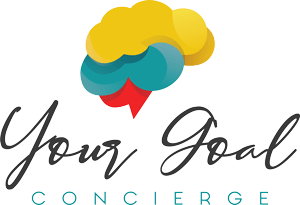The Trust Barrier: Why Leaders Struggle to Let Go
Erica Kesse
What separates thriving leaders from those just getting by? A bold, clear, and actionable vision—paired with the ability to trust others to help bring that vision to life.
Your vision isn’t just a statement—it’s the foundation of your organization’s future. It defines the impact you’ll make, the legacy you’ll leave, and the path to your goals. But without trust, even the best vision can fall flat.
Many CEOs and leaders hesitate to delegate, not because they lack vision, but because trust feels risky. Maybe you’ve been let down before. Maybe you believe no one else can handle things quite like you do.
This constant need for control? It’s often a response to past experiences—your mind protecting you from the unknown. That’s where the "From Trauma to Trust" Intensive comes in.
This transformative program helps leaders shift from a "survivor mind" to a "thriving mind." It starts by recognizing how past challenges shape your leadership style. Do any of these sound familiar?
How Trauma Responses Show Up in Leadership
- Fight: The Overworker & Perfectionist
- How It Shows Up: You push through at all costs, refusing to slow down. You take on too much, micromanage, or struggle to trust your team to deliver results.
- Signs: Burnout, exhaustion, headaches, frustration, and a tendency to control every detail.
- Impact: You may see short-term success, but long-term, this leads to stress, resentment, and an unsustainable work environment.
- Shift to Thriving: Learn to delegate, set boundaries, and trust that you don’t have to do everything alone.
2. Flight: The Avoider
- How It Shows Up: You avoid conflict, tough decisions, or high-pressure situations. You may jump from one idea to another, constantly searching for the "next thing" instead of facing challenges head-on.
- Signs: Procrastination, over-researching, perfectionism, or busyness without real progress.
- Impact: Your vision stays stuck in planning mode instead of turning into reality. Fear of failure keeps you from taking action.
- Shift to Thriving: Learn to embrace discomfort, take imperfect action, and develop resilience by facing challenges instead of running from them.
3️⃣ Freeze: The Overthinker & Procrastinator
- How It Shows Up: You feel stuck, overwhelmed by decisions, and unable to move forward. You might analyze every possible outcome, leading to paralysis and inaction.
- Signs: Indecision, second-guessing, procrastination, and self-doubt.
- Impact: You spend so much time thinking about the best move that you miss opportunities or delay critical decisions.
- Shift to Thriving: Build decision-making confidence, break big goals into small steps, and take action even when you don’t have all the answers.
4️⃣ Flop: The Overwhelmed & Disengaged Leader
- How It Shows Up: When things become too much, you shut down. You might feel disconnected, unmotivated, or emotionally drained. Instead of problem-solving, you withdraw.
- Signs: Apathy, exhaustion, avoidance of work, feeling emotionally numb.
- Impact: Your business, team, or vision suffers from lack of direction. You may feel like you’re "just going through the motions" rather than leading with passion.
- Shift to Thriving: Reignite your purpose, reconnect with your vision, and develop strategies to prevent overwhelm before it leads to disengagement.
5️⃣ Fawn: The People-Pleaser
- How It Shows Up: You prioritize making others happy over making necessary decisions. You struggle to say no, avoid setting boundaries, and may take on responsibilities that aren’t yours.
- Signs: Overcommitting, apologizing frequently, agreeing to things out of guilt, and feeling resentful afterward.
- Impact: Your leadership lacks authority because you’re too focused on keeping the peace instead of making bold decisions. This can also lead to burnout and loss of personal power.
- Shift to Thriving: Learn to set firm boundaries, communicate assertively, and lead with confidence—even when it’s uncomfortable.
The Power of Intensive Leadership Growth
The Intensives program helps you break free from automatic stress responses and build healthier coping mechanisms.
For example, if you tend to fight through everything, you might experience burnout, negative self-talk, and emotional exhaustion. Instead of pushing harder, Intensives teaches you to pause, reset, and operate from a place of clarity and balance.
What You Gain from the Intensives Program
By participating, you will:
✅ Gain clarity on your next steps without second-guessing yourself.
✅ Build resilience and confidence as a recognized leader in your industry.
✅ Create harmony between your personal and professional life.
This is your opportunity to step into thriving leadership, where you lead with vision, trust, and confidence.



